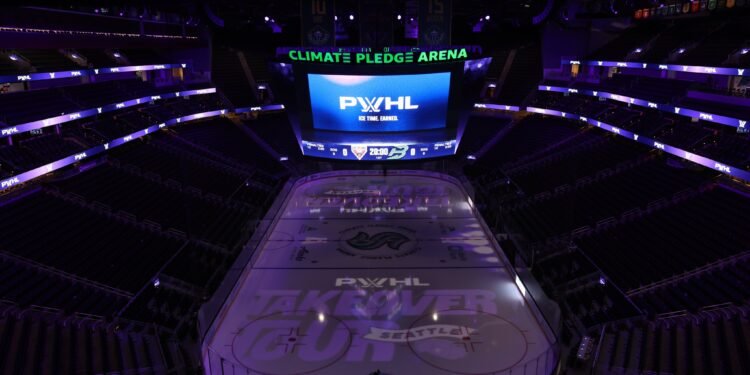Placing two expansion teams in the east would be the easy thing to do for the PWHL. It wouldn’t be wrong either. Quebec City and Detroit have certainly shown there is significant interest in professional women’s hockey. The two markets would be incredible for the league.
But while the east would be easy, the west is best for PWHL expansion.
Broadcasting and Media Opportunities Are Key
There has been a lot of talk around national broadcasting of PWHL games. The NWSL has a $60 million deal annually to show their games in the United States. That kind of money would be a game changer when it comes to the sustainability and growth of the PWHL. How much so? A single year deal equivalent to what the NWSL is receiving would pay every player salary in an eight team league for the next 5.75 years. That’s significant. It would carry struggling franchises, and allow the league to work out the kinks without worrying about the fact the New York Sirens continue to average only 2,584 per game.
Time Zones Matter
21 of the PWHL’s 90 games this season drop the puck before noon for west coast viewers. Almost every weekday PWHL game this season started before the end of the work day at 4pm or 4:30pm PST. It’s an issue for the accessibility and growth of the game to viewers across North America. Adding a pair of teams in Mountain Time or Pacific Time would open opportunities, not only for viewers on the west coast, but in the east as well. In terms of national media coverage, it also opens time slots that are outside of prime time, and extends the reading day for online and print publication days which will allow more resources to be allocated to women’s hockey.
Where Should The PWHL Go?
Listening to players, coaches, general managers, and league staff, almost everyone believes that Quebec City and Detroit are the easy and safe choices. Almost everyone is also hoping for, and believes the right choice is Seattle and Vancouver. Denver certainly made their case as well, as did Edmonton. Seattle and Vancouver make sense however, if you move beyond the infrastructure requirement, and look at travel. Sure, the flights to Denver or Edmonton would be an hour shorter for the league’s eastern most teams, but it would be a solo excursion. Teams travelling to the west coast could complete a road trip playing at Seattle and Vancouver, less than three hours apart by bus, with ease. It would open more flights as teams could land in either location, more venue dates, and would make an instant west coast geographic rivalry.
Going West Needs To Happen
The PWHL needs to go west, now or in the future. Now makes more sense. Eventually the league will want to look at other major markets in the west, whether it’s Edmonton or Calgary in Alberta, Denver, Los Angeles, or Las Vegas. There’s been interest from across North America, and no one wants the PWHL to remain a regional loop. To facilitate more Western expansion, and more expansion overall, the league needs to look west. Eventually, an eastern and western conference would be ideal, but to make two conferences happen, the process needs to start. Putting two more teams in the east now means the league will not tap into viewership or media nationally for years, as it’s unlikely the league will move beyond eight teams for another few seasons…or more.
The League Should Be Looking At Non-NHL Markets
Following the NHL model is beyond unwise. The NHL has failed to grow their audience in any meaningful way in decades compared to the rest of the North American sporting market. Quebec City makes more sense than any other market in terms of a fan base that would adopt the team with regular, unwavering support. Similarly, French media is always ravenous for more hockey. In the west, there are women’s sports markets like Portland that could also be examined. NHL markets are logical, but perhaps the most logical among them are the newest markets like Seattle, and Las Vegas in the USA.
Wherever the PWHL expands this year, there will be excitement. Fans in Quebec City, Detroit, Edmonton, Vancouver, Seattle, and Denver have proven they’re ready to support professional women’s hockey. While the east is easy for the league when it comes to travel and fans, the west is still best for the PWHL’s long term success.






